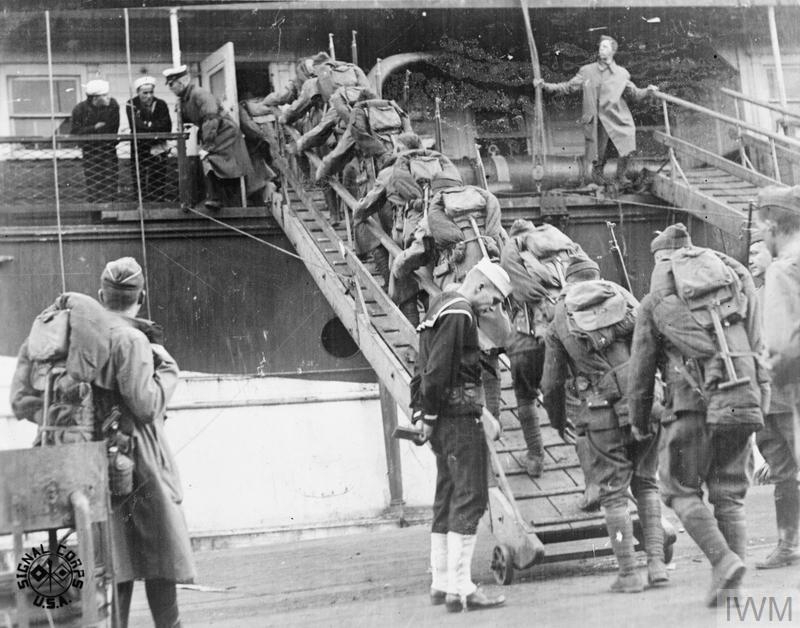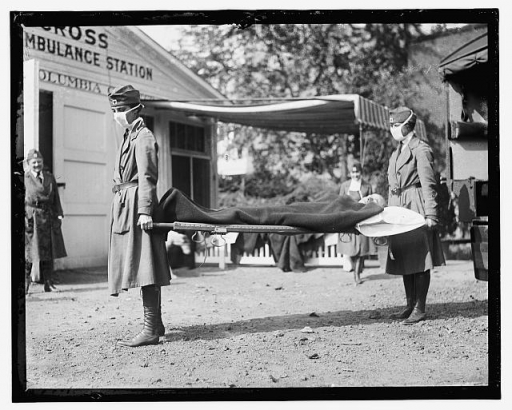The armies of the Great War were confronted with a new enemy in spring 2018, as an unusually deadly outbreak of influenza took hold. So-called ‘Spanish Flu’ coincided with the start of Germany’s final offensives, and the arrival of American troops to support the Allies. US WWI historian James Taub considers its impact on American forces.
In the latter stages of March, the new German onslaught in France had pushed the British and French forces back across the old battlefields of the Somme. Hundreds of thousands of casualties had been incurred on both sides. Yet for the allied forces fresh troops were arriving. This time not from the French colonies in North Africa nor from the ports of Dover and Southampton. These new soldiers were coming from New York, Texas, and California.
The American Expeditionary Force began landing in large numbers starting in the early months of 1918. Yet with the Doughboys came not only hundreds of thousands of urgently needed troops, but also the diseases now spreading among the training camps dotted across the United States. The worst of all these, became known as the ‘Spanish Flu’.
Spread
The disease would spread rapidly through the ranks of the AEF. It was first discovered within the United States in Kansas in January 1918, before a cook at Camp Funston reported sick on 11 March. Given the close proximity of the Doughboys in the training camps it is not surprising that many men fell sick. Influenza was carried on packed troopships to France where the newly arrived Americans mixed with already infected troops of the British and French Empires. The virus also took its toll on the German Army.
In France the flu became easily communicable. The large masses of men moving and interacting with one another proved to be a breeding ground for the virus to spread. It also became more dangerous as time passed. Those Doughboys who had mild cases would remain at their posts. More severe cases would be sent back to base hospitals where the more intense strain of the flu would spread among soldiers and medical staff with already weakened immune systems. Those suffering from the effects of the epidemic would take up many hospital beds needed to treat the wounded and add further disruptions to the logistical nightmare which plagued the AEF’s supply lines during the major pushes in the closing months of the war.
 Troops of the American 342nd Infantry Regiment at Southampton, boarding ship for France in September 1918 (Photo © IWM 48369)
Troops of the American 342nd Infantry Regiment at Southampton, boarding ship for France in September 1918 (Photo © IWM 48369)
Early flu casualties did not receive the same attention as those suffering from the later strains. Once at a base hospital these early patients would be neglected in favour of treating battle wounded soldiers. Many with the flu soon developed pneumonia eventually succumbing to their already weakened state. It was not until the early autumn of 1918 that the alarming scope of the disease became understood and appropriate measures were taken to treat those who had become infected.
The number of soldiers with influenza spiked in October 1918, at the height of the largest American operation of the war, the Meuse-Argonne Offensive. Among some of the attacking divisions nearly four fifths of medical evacuations were for non-battle casualties, and for the whole campaign over one third of evacuations were due to sickness and disease.
The US Army Medical Department noted 791,907 cases of influenza through the war, killing 45,000 men both at home and abroad. 15,849 of those deaths were within the AEF, while close to 30,000 were killed before they left training camps in the US. Almost twice as many men therefore were killed by the Influenza, then by enemy action during the whole of the Meuse-Argonne Campaign. The US Army therefore had a higher percentage of influenza cases than any of the other major combatants in the First World War. While the ‘Spanish Flu’ does not claim the same level of attention or understanding among the general public that the War does, it touched the lives of many Americans whose sons, fathers, brothers, sisters, and daughters were lost not to enemy action but by sickness and disease.
© James Taub & Centenary News
Images courtesy of Library of Congress Washington DC – Prints and Photographs Division LC-DIG-npcc-18662 (Flu Demonstration); Imperial War Museums, © IWM Q 48369 (US troops at Southampton)
